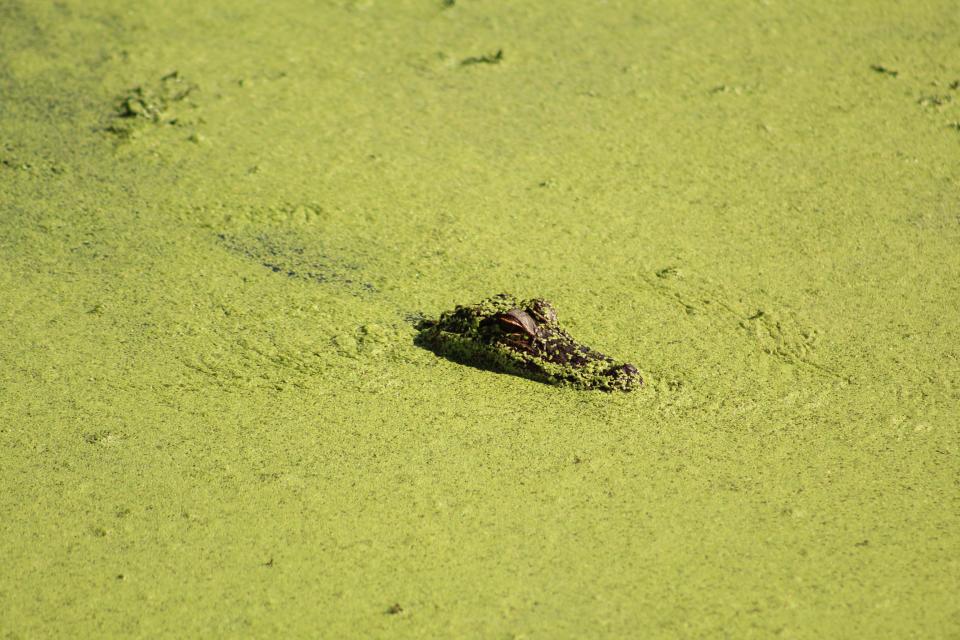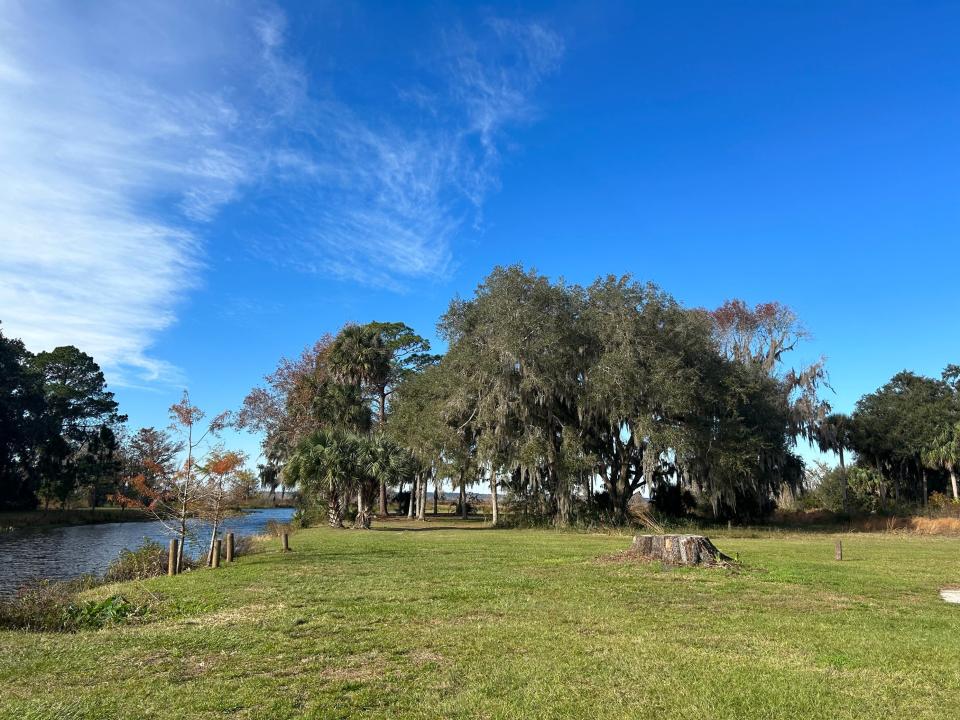ORANGE LAKE — Anyone who frequents Orange Lake in North Central Florida can agree: There’s no shortage of alligators there.
Orange Lake is the largest lake in the region, according to the Florida Fish and Wildlife Conservation Commission (FWC), spanning both Alachua and Marion counties. It ranks second in Florida in terms of number of alligators, with its 12.550 acres containing approximately 2,732 alligators, according to the A-Z Animals Blog.
Local residents Shawn Robinson and Scott Sommer travel from Ocala frequently to hunt alligators for meat on Orange Lake. They said they’ve seen thousands of gators, especially many hatchlings during late October and early November.
Special Gator: Brooke the Alligator visits UF’s College of Veterinary Medicine for treatment
“I don’t see them as a sense of concern,” Robinson said. “I think good proper management of the species is important. If you don’t have proper management, then obviously, the lake can get over ran with them and you could have a real major problem. Although I see thousands of pairs of eyes out there, we’re out there harvesting some of them. And so, you know, that kind of keeps things in balance.”
Alligator hunting

There are strict rules when it comes to alligator hunting in Florida. Robinson received the maximum number of Convention on International Trade in Endangered Species (CITES) tags — two — which allowed him to harvest one alligator per tag. The FWC says alligators can be harvested during certain periods between Aug. 15 and Nov. 1.
The Statewide Alligator Hunt is limited, though. There are normally more than 15,000 applicants who apply for approximately 7,000 harvest permits, which are issued through three random drawings each year, according to the FWC.
Related coverage: This Florida lake could be home to 30,000 alligators. Here are lakes with highest gator counts
Robinson and Sommer were among the lucky chosen winners. Sommer comes to Orange Lake about once a week year-round and said many alligators thrive in its marshlands and shorelines.
“You have the shoreline and then you have, you know — couple hundred, if not, you know, thousand yards of just marsh where all those big gators can breed and be happy and stay away from people,” Sommer said. “Then during breeding season, hunting season, they come out.”
This embedded content is not available in your region.
He also said responsible, ethical hunting is important and most hunters do appreciate wildlife.
“Hunters — we care about the animals… We’re the people who pay the FWC when we buy our federal duck stamp, our alligator hunting (permits), you know, the licenses,” Sommer said. “Nobody loves animals more than me. Like, I absolutely love animals… We didn’t kill anything today. Taking ethical shots is big — like, we could have been blasting into the sky, but we just chose to, you know, hold off on birds and just watch them.”

Gainesville resident and University of Florida alum Mike Jacobs said he usually comes to Orange Lake at least once a week to bass fish and usually sees two or three alligators each time he’s there. They don’t bother him — actually, they run from him — and he simply thinks of them as “animals doing their thing.”
“They don’t concern me,” Jacobs said. “They will get after small animals. You don’t want your dog in the water or out here walking around — and little kids. An adult — they will get away from you as quick as they can.”
High Springs resident James Slayton also frequents Orange Lake to hunt ducks and said the number of alligators that he sees each visit varies, but can be as many as 10. At night or early morning is when he usually sees alligators and he agrees that they aren’t a concern — except when they’re eyeing a duck that he was planning to hunt.
“Sometimes they steal your ducks,” Slayton said.
This may be a problem elsewhere in the state, too.
State full of gators
According to a USA TODAY NETWORK-Florida report, the No. 1 lake for alligators in Florida is Lake Okeechobee. It is Florida’s largest freshwater lake and borders five counties. It has 9,308 counted alligators and an estimated population of about 30,000.
Orange Lake ranks second in the state, with 2,732 alligators; Lake George, in Volusia County, ranks third with 2,660 alligators; Lake Jesup, in Seminole County, ranks fourth with 2,414 alligators and an estimated population around 13,000; and Lake Kissimmee, in Osceola and Polk Counties, ranks fifth with 2,065 alligators.
The FWC says there are around 1.3 million alligators living in all 67 counties, so everyone in the Sunshine State is bound to have at least one encounter with the Florida gator — and no, not the sports team. They are simply a part of Florida life, and it seems like most residents have accepted that fact.
This article originally appeared on The Gainesville Sun: Alligators abundant in this local lake; only one Florida lake has more
Signup bonus from




